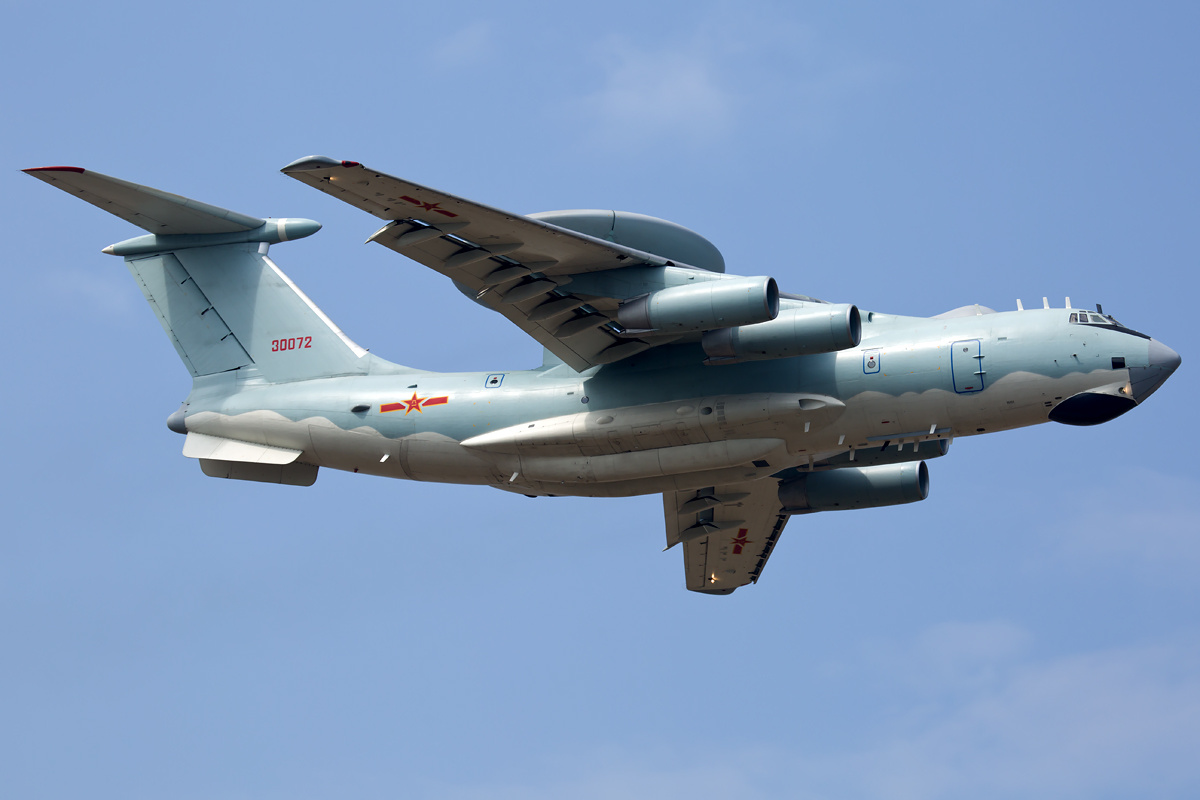China is developing a new generation of “strategic airborne early warning (AEW)” aircraft, according to a latest report. Already possessing two dedicated AEW platforms with a third on the way, the report, if true, will significantly enhance China’s early warning capabilities.
China Vows Full-Scale Modernization Of All Its Armed Forces To Beat ‘Strong Enemies’ – Pentagon
The report assumes significance in the backdrop of persistent tensions in the Taiwan straits, with the US-led West’s increasing ties with the island.
Experts, however, point to the difficulty involved with such a project since large AEWs need bigger transport aircraft, which need extensive redesigning and modification of their airframes.
Other observers doubt the claim altogether, drawing attention to previous reports about Chinese defense programs that turn out to be false.

The report in the South China Morning Post (SCMP) talked about how various Chinese aerospace companies were involved in design and development of China’s domestically developed Y-20 transport aircraft instead of just one, which led to faster completion of the project.
The report went on to quote Macau-based military aviation expert Antony Wong Tong, who claimed the existence of the under-development KJ-3000.
“China is developing its new generation KJ-3000 strategic early-warning aircraft, which needs a bigger platform, but the country doesn’t have big aircraft like its American counterpart, so the Y-20 would be the only option,” Wong said.
Extensive Modification Required
Wong’s statement followed that of Fu Qianshao, a retired People’s Liberation Army Air Force (PLAAF) equipment specialist, who said the involvement of different aircraft companies and designers could allow the Y-20 to be developed as a “strategic early warning platform.” “But it will still take time to make a lot of changes because of the vast difference in structure and weapon systems between transport and early-warning aircraft,” Fu said.
Zhou Chenming, a researcher from the Beijing-based Yuan Wang military affairs think-tank, pointed to how adding an early warning radome could dramatically impact its speed.
“There are a lot of questions, and it will need a lot of trials. Some of the Y-20’s technology could be used for early-warning aircraft and even new airliner projects, which might be the better platforms for next-generation early-warning aircraft,” he said.
AEW (also called Airborne Warning and Control System or AWACS) carries an extensive set of radar arrays either on its fuselages like the Israeli EL/M-2075 AWACS on the Boeing 707 aircraft or the rotating radome on the Russian-origin Ilyushin Il-76.
India uses both systems, besides the ‘Netra’ AEW mounted on the Brazilian Embraer aircraft. Tong pointed out that while the Russians prefer converting transport aircraft into AEW/AWACS, the United States (US) uses passenger airliners.
Either way, this requires a massive redesign of the airframe to house the radome or the arrays and seating arrangements for the crew in the main body to operate the various systems, sensors, and consoles.
This will have to be followed by comprehensive tests on the impact of either the radome or the arrays on the plane’s airframe.
Expert Doubts Report
Andreas Rupprecht, a Germany-based leading Chinese military aviation expert doubts the report.
“In the past, there have been reports about the J-15 and the J-20’s engines that later developments in the fighters’ evolution and induction showed were inaccurate. Thus, it would be advisable to not believe this report too right off the bat,” Rupprecht added.
Rupprecht has long warned of speculative, untrue, and disproven media reports and particularly morphed photographs of PLAAF fighters like the J-20 over the years, showing various features and configurations.
These have been found to be in complete variance with subsequent official videos, pictures, statements and analyses. As for the latest report, Rupprecht also points to the photo in the report, which shows a Boeing C-17 transport aircraft and not a Y-20.
China’s AEW Platforms
China has reliable AEW capability, with the KJ-2000 installed on the Il-76 platform and the KJ-500 on the Shaanxi Y-8 plane. Both are used by the PLAAF.
It is currently developing the KJ-600 AEW for carrier-based operations that can give the PLAN massive reach and detect incoming threats from even further away.
Its closest rival can be considered the US Navy’s E-2D. Fixed-wing AEW planes can fly farther and higher, and have bigger, more powerful radars than the helicopter-based AEWs that the Indian and Russian navies employ.
Satellite and other hazy images of the KJ-600 over the last year have generated considerable excitement about the aircraft, which is expected to have the most advanced radar, electronic communication, and data-linking technology.
The KJ-600 is expected to operate off the Type 003 Fujian carrier that was launched in June this year since it has been reported to have an Electro-Magnetic Launch System (EMALS), which can launch heavier planes.
A photo from July this year showed a pitot tube on the nose, which indicated that it was still in a testing phase and yet to see service.
- The author can be reached at satamp@gmail.com
- Follow EurAsian Times on Google News




